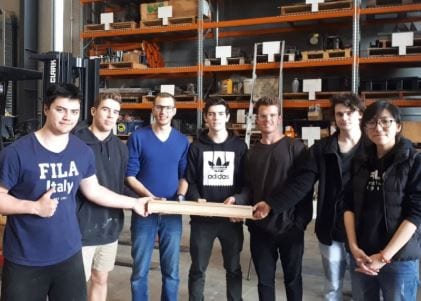Hey again! Hopefully you guys are doing well and not feeling too burned out with the semester starting to wrap up. Luckily you would have experienced a university exam schedule (well most of you) by now, although I have heard this semester’s timetable is unusually rough! Just make sure to keep on the grind and do all the essentials when it comes to nurturing your brain (exercise, efficient breaks etc).
So lately I’ve been up to my ears in assignments, the majority of them being group projects. It may sound pretty daunting having to do multiple group projects over a small time frame, but with the cohort we have, it’s been interesting meeting new people with similar interests and goals. Apart from the obvious issues such as some group members ‘ghosting’ the entirety of the project, somehow avoiding the messenger and email spam, I’ve been lucky enough to be matched up with some great people. I know a lot of students, especially in engineering, would like to fully take the reigns of their assignments, but it’s been great to learn how to depend on one another to methodically pick away at hefty projects. A couple of interesting group assignments we’ve had in recent weeks include the analysis of an existing small-scale dam and how to mitigate for potential hazards, and an evaluation of the life cycle analysis of a tiny house.
With the number of report-styled assignments recently, the annual Structures Day provided a fascinating practical alternative. Structures Day is essentially a full day of hands-on experiments that show the real-life implications of some of the structural mechanics we had seen in class. Some experiments reinforced our learning of key concepts, such as the shear centre and Euler buckling load demonstrations, whilst others entailed fairly hilarious outcomes to tests we students conducted. Most definitely the making and testing of concrete was a highlight, showing the effects of how much variability goes into the ingredients, especially water content.
Unfortunately, it wasn’t all just a fun informal experience, as we had to conduct a fairly heavily-weighted assignment that all depended on our critical thinking and time management. The Structures Day project required us as a group to design a 600mm long structure that had a deflection requirement of 5mm under a 2kN test load located at mid-span (amongst several other requirements). On the day, we were given 40 minutes to construct our design and test it. Issues with the eccentric nature of the wood made the construction process particularly stressful, but overall it was a really great practical application of our admittedly pretty shaky knowledge.
A quick tip for you 2019 Civil Part II students: take into account the possible curved shape of the wood as well as the spacing between the glued joints. Although it may make your conceptual drawings look weird, the calculations will be negligibly different, and you won’t be scrambling on the day trying to saw off a super-glued slab with 5 minutes left (as unfortunately we were!).
I’ve also heard that the Part II specialisation forms have been sent out. My only piece of advice, which has probably been said to you a million times already, is pick what you most enjoy! There is so much talk about what the job availability is like in each field, and what the potential earnings are in X amount of years, but these questions should only be contemplated as the last resort when deciding. When picking the most appealing specialisation work becomes more interesting, grades get higher, job prospects become greater, and more millions are earned (this process is not guaranteed nor is backed up with sufficient evidence). Don’t worry if you’re dwelling on multiple specilisations either, as this means the Part I lecturers were successful in selling their content to you! At the end of the day, an engineering degree from the University of Auckland is a pretty good achievement, and there really isn’t a bad option.
I’ll see you guys in a bit!
